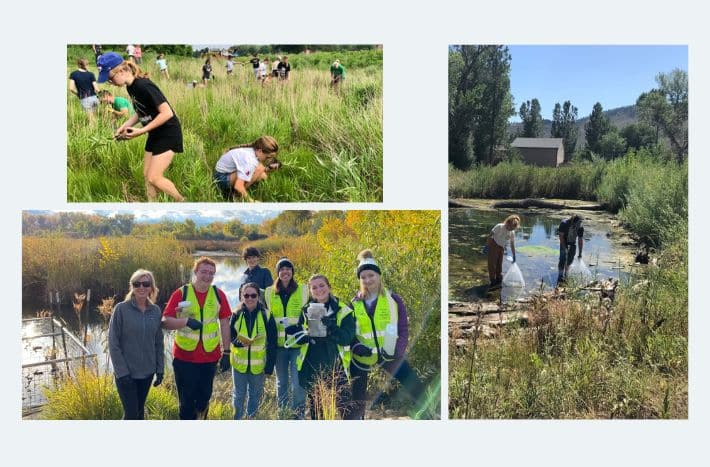New ASFPM Guide is a Much-Needed Floodplain Management Legal Resource
The ASFPM Flood Science Center, in partnership with the NAI Policy Committee, has developed a comprehensive legal resource for floodplain management. The “No Adverse Impact Legal Guide for Flood Risk Management” provides legal essentials for floodplain administrators, elected officials, and planners, as well as detailed case law for the legal professionals who represent them. This guide was funded in part by the Federal Emergency Management Agency.
The No Adverse Impact (NAI) approach aims to prevent the actions of any community or property owner from impinging on the rights of others, all while reducing flood losses and costs. This approach encourages local decision-making to ensure that the impacts of future development will be identified, considered on a watershed-wide basis, and mitigated.
Early on in the NAI Legal Guide project, the Flood Science Center reached out to ASFPM members via a needs assessment to find out what legal issues “keep them up at night.” The resulting feedback from floodplain professionals across the country helped inform the content of the guide, which covers topics such as takings, liability, higher regulatory standards, and property rights.
Community representatives and floodplain managers can use the guide to inform their decisions on the design and implementation of NAI floodplain management programs, and government attorneys can use it to help defend the legality of NAI programs. Readers will come away with a greater understanding of the legal issues that may arise when their community chooses to adopt (or not adopt) flood resilience practices that exceed minimum state and federal requirements. Anticipating potential legal challenges before they occur helps communities to design flood resilience measures in legally sound ways and manage legal issues as they arise.
The legal guide workshop
 Based on the new legal guide, a two-hour workshop titled “A Legal Examination of No Adverse Impact Flood Risk Management and Floodplain Stewardship” was held at ASFPM’s 2023 Annual Conference in Raleigh, North Carolina.
Based on the new legal guide, a two-hour workshop titled “A Legal Examination of No Adverse Impact Flood Risk Management and Floodplain Stewardship” was held at ASFPM’s 2023 Annual Conference in Raleigh, North Carolina.
The workshop began with an introduction by Janet Thigpen, CFM and Terri Turner, AICP, CFM, who explained the concept of NAI floodplain stewardship and why it is necessary. Then Jerry Murphy, J.D., AICP, CFM and Thomas Ruppert, Esquire provided an analysis of takings law, and an overview of relevant cases over the years. They also discussed the concept of property and the evolution of this concept over time, how to avoid a successful takings claim based on regulation, tort liability, and sovereign immunity.
Key takeaways from the workshop included:
- Even if we perfectly implement current federal floodplain management standards, flood damage will increase. Current approaches deal primarily with how to build in the floodplain rather than how to minimize future damage.
- Floodplain stewardship means caring for and protecting the beneficial biologic and hydrologic functions of areas where the risk of flooding is expected, while managing human uses to minimize the potential for adverse impacts and flood damage.
- NAI does not mean NO development!
- Courts have broadly and consistently upheld performance-oriented floodplain regulations, including those exceeding minimum FEMA NFIP standards.
- Courts have broadly supported restrictive regulations for high-risk flood areas based upon public safety, nuisance prevention, public trust, and other community concerns.
- Under common law, no landowner—public or private—has the right to use their land in a manner that substantially increases flood or erosion damages on adjacent lands; if they do so, they are liable for the damages.
- Liability lawsuits are commonly based upon at least one of four causes of action in Tort: negligence, nuisance, trespass, or law of surface water.
Overall, participants walked away with greater insight into the common law, constitutional law, and legal foundations of the NAI approach to flood risk management and floodplain stewardship.
How to access the legal guide
The NAI Legal Guide is publicly available through ASFPM’s website at no.floods.org/LegalGuide. You can download a PDF of the entire guide or each of its five major sections separately. Section One introduces the concept of No Adverse Impact and its role in flood risk reduction, Section Two explains common legal concepts that are relevant for NAI, and Sections Three through Five contain detailed legal memos on Torts, The Constitution and its Protection of Property Rights, and Federal Laws, respectively. And if this comprehensive legal guide is not enough, additional legal documents related to flood risk management are available in ASFPM’s searchable library at no.floods.org/Legal.
The new NAI Legal Guide expands ASFPM’s series of NAI How-To guides for floodplain practitioners, which provide tools and guidance for integrating NAI principles into local floodplain management regulations, policies, and programs. The original NAI Toolkit was developed in 2003, followed by the Coastal NAI Handbook in 2006, and more recently, the series of How-To Guides based on the seven “tools” found in the Toolkit. All the NAI How-To guides are available here.
What’s next for the legal guide
New content (such as coastal-specific legal memos) is already in the works and will appear in a future version, expanding upon existing legal memos. The legal memos are written primarily for community attorneys. The next stage of the project will provide a corresponding narrative that mirrors the content of the legal memos, but written with floodplain professionals in mind as the primary audience.
The NAI Legal Guide team welcomes input on how the guide can be improved and expanded upon (e.g., state law, etc.). If you have suggestions on what else should be included, or other feedback, please contact Jeff Stone at Jeff@floods.org.



